Player Reference Guide
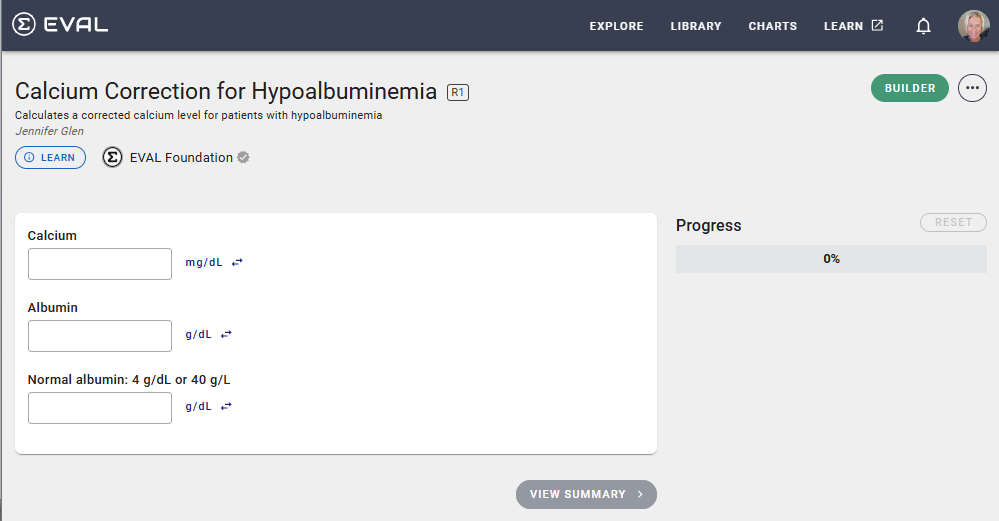
Player Overview
The Player component of EVAL is where you run applications. It is an interactive decision support interface designed to lead a user through a series of interactive questions and logic steps that ultimately leads to a result or set of results representing a recommendation or calculation.
Interactive inputs (question-choice or numerical field) can appear one at a time or as a section of inputs that follow an automated logic path driven by the builder component of the application. Numerical inputs can also accommodate multiple automated unit conversions within an input field.
Multi-media and custom instructions can add depth, scope, and clinical context to the user experience. An application, as an art form, can serve an unlimited combination of niches, to include education, quality control, research, decision support, protocol workflows, and more.
Accessing Player
After logging in to EVAL and clicking on an application in Explore or Library, you enter the Player interface.
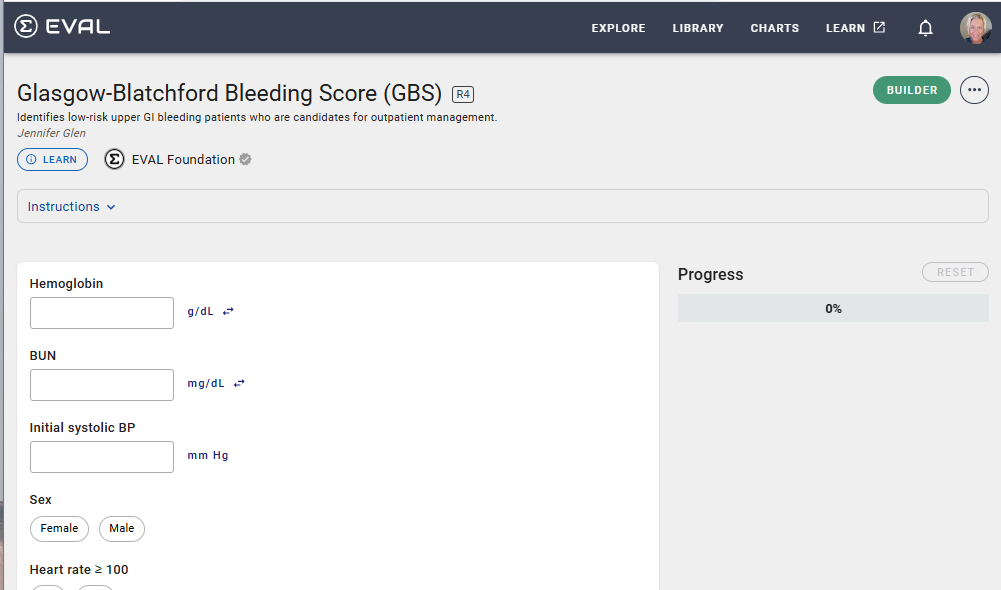
Components of Player
An application is comprised of the following:
- Application Metadata - High-level details about the application, such as the name, slug, and description
- Sections - Optional logical groupings within your application of like content
- Questions - Questions for your application that can have numeric or choice responses. Responses can be either single choice or multiple choice.
- Results - The output of your application. Examples include a formula calculation and/or information displayed based on the responses.
The following two screenshots provide examples of applications in_Player_ that showcase these components.
This application snapshot highlights application metadata, sections, and questions:
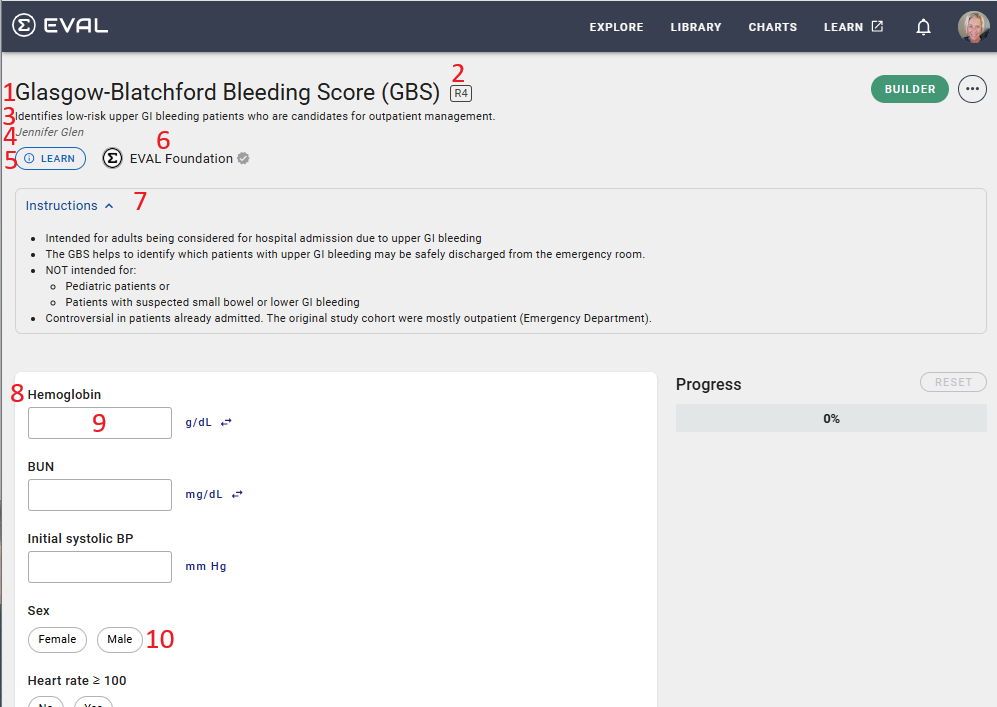
- Application Title
- Revision Number
- Application Description
- Attribution
- Learn More Feature
- Account Creator
- Instructions
- Question Title
- Numeric Response
- Choice Response
This application snapshot highlights the application results components:
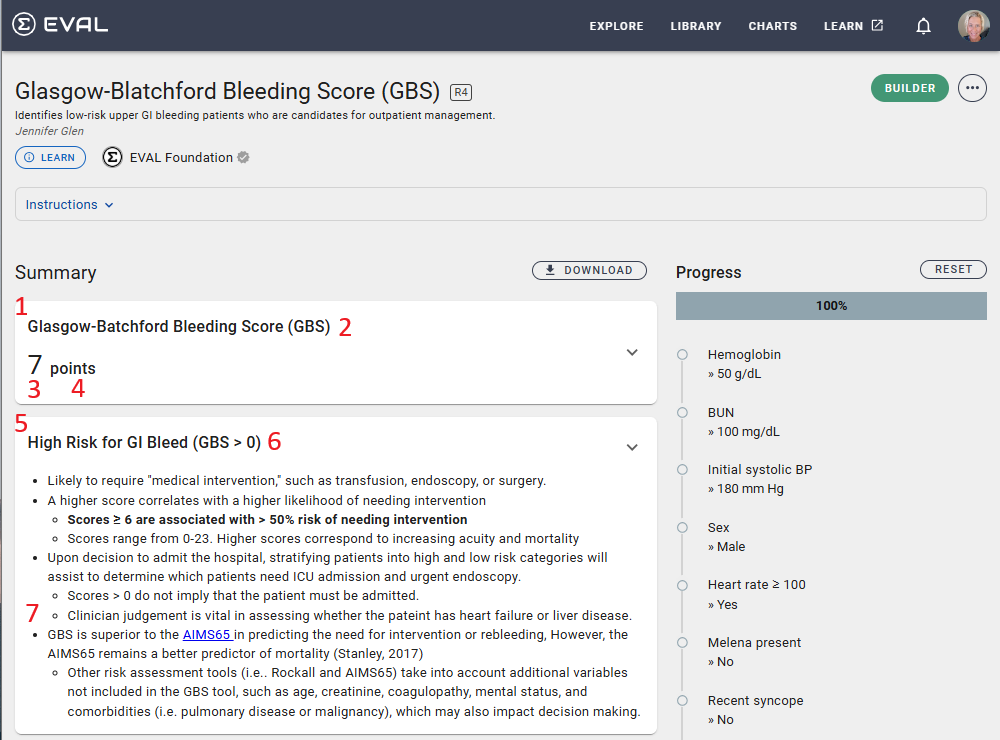
- Sample of a result card with a total score. This result has a visibility rule to always display.
- Result Title
- Result Score
- Result Unit of Measure
- Sample of a recommendation card. This recommendation has a visibility rule to only display when GBS > 0.
- Recommendation Title
- Recommendation Description
NOTE: As displayed in the example above, the calculation result can stand alone. Below the calculation result, custom recommendation can appear as a second and distinct recommendation card. Another option that may appear is a calculation result that also includes a set of specific recommendations in the same recommendation card. Additional recommendations can also appear or trigger based on a combination of user inputs.
As you are completing the application, the Progress section on the right provides an audit trail of decisions. The progress bar displays the percent complete of the application. At any point while running an application, you can navigate back to a previous response and change an input. Simply clicking on an input listed in the audit trail will take you back to the original response. Clicking Reset starts the application over.
Running Applications with Multiple Units / Conversions
An application may contain a question that allows a numeric input to be entered with multiple unit options to select from (see below). By clicking the double arrows, additional units will appear based on the available options. In the BMI calculator below, the user running the application can choose between "kg" or "lbs" for the weight input. The application defaults to the primary unit (the first unit listed), which is "kg" in this case. The primary unit is also the default unit utilized in any calculations. Therefore, if weight is entered in "lbs", the application knows to automatically convert pounds to kilograms when calculating BMI.
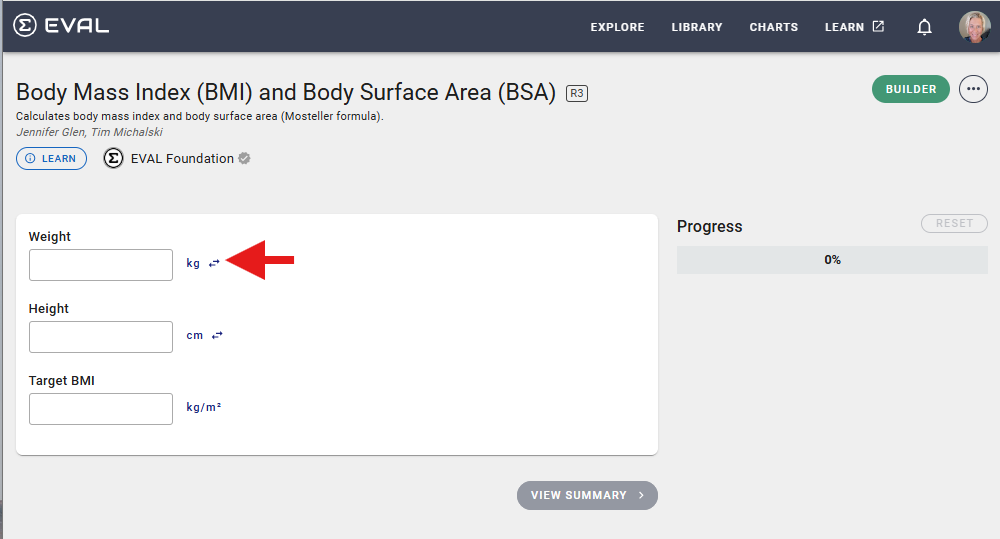
Clicking the double arrows to the right of "kg" allows you to change the unit to "lbs". If you enter a number next to "lbs" and change the unit to "kg", the numeric input will automatically be converted from pounds to kilograms.
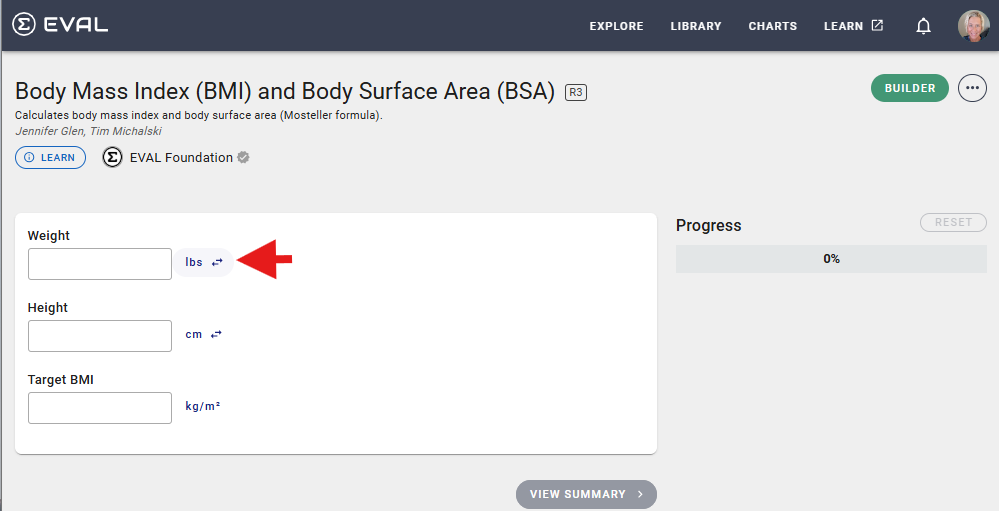
View Summary will appear greyed out until you have completed the last input and have come to the end of the application.
Click View Summary to navigate to the final recommendation page and decision summary notes.
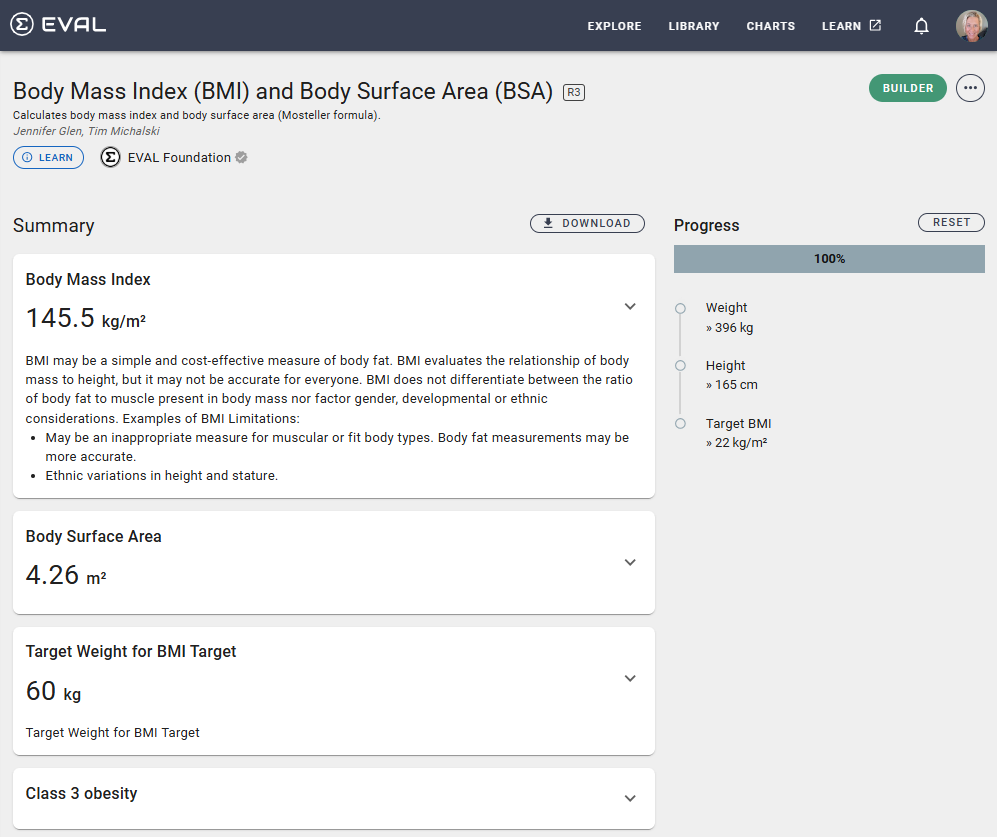
This display on this page may vary based on the workflow of the application.
Updated about 1 year ago
